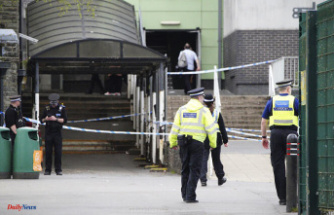They sail silently through the night, only sometimes recognizable as shadows. The "Bat Night" offers offers throughout Bavaria to get to know bats up close and even to hear their sounds.
Waldkraiburg/Arnschwang (dpa/lby) - Lectures, guided tours and special detectors that make echolocation calls from bats audible - at the European Bat Night at the end of August you can get to know the endangered group of animals better. The "Bat Night" on August 27th and 28th is intended to give "an insight into the fascinating life of bats", said Andreas Zahn from the coordination office for bat protection in southern Bavaria.
Attention to the flying mammals is important because many species are endangered. In addition, bats often live in close proximity to humans, for example in or on buildings, and are therefore more dependent on the goodwill of humans than other animal groups, said biologist Zahn. There is a need for "sympathy advertising for bats" so that, for example, bat roosts in the house are tolerated.
So far, 25 bat species have been detected in Bavaria, as reported by Angelika Nelson from the Bavarian State Association for Bird Protection (LBV). However, three of them (the giant noctule bat, the alpine bat and the free-tailed bat) are only occasional guests. With 21,655 records, the mouse-eared bat is the most common bat species in Bavaria, according to LBV biologist Nelson. The pygmy bat and water bat are also frequently found, as they are recorded with detectors.
How many bats there are in total is difficult to determine because some species are difficult to count, said expert Zahn. The horseshoe bat species is most endangered. Germany's last colony of the endangered greater horseshoe bat lives in Hohenburg, Upper Palatinate. As reported by the LBV, the population has now increased from just 37 animals in winter 2003 to over 400 animals. Zahn nevertheless objected: "As long as there is only one location, it is always very risky."
For a bat-friendly environment, experts recommend not using pesticides, avoiding light pollution, and leaving mature trees with cavities. Because bats feed on insects, they often hunt where insects are plentiful, such as animal pastures or ponds with no fish.
In the urban area, the pipistrelle bat and the white-striped bat are the most common. Although the animals are very shy, it can happen that some of them get lost in apartments.
"The young pipistrelle bats look for new quarters in groups," explains biologist Zahn. Why, for example, animals keep flying into apartments in Erlangen and Augsburg, but not in other cities, is a "phenomenon that is not yet fully understood". Anyone who discovers a bat roost at their own house can report it to the nature conservation authority.
Zahn said that other species of bats that you don't usually see can be observed in many places in Bavaria on "Bat Night" tours. "Especially for children it is very exciting to see that the night is full of life and that there are lots of animals around."












